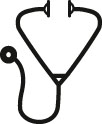Abstract

Background: Severe aplastic anemia (SAA) is a rare, life-threatening disease characterized by pancytopenia and hypocellular bone marrow (BM). Immunosuppressive therapy (IST) is the standard of care for pediatric patients (pts) who lack a matched sibling donor. Approximately one-third of pts do not respond to IST or relapse following treatment. Therefore, effective and well-tolerated therapies are needed to improve outcomes of IST in pediatric pts with untreated or refractory/relapsed SAA.
Aims: ESCALATE (CETB115E2201; NCT03025698) is a multi-institutional Phase II dose-escalation study to evaluate the pharmacokinetics (PK), safety, efficacy, and acceptability of the thrombopoietin receptor agonist eltrombopag (ETB) in pediatric pts who have refractory/relapsed SAA after IST for SAA (Cohort A) or who have previously untreated SAA (Cohort B).
Methods: Patients (1 to <18 years [y] of age) received ETB as tablets or powder for oral suspension. Cohort A pts received ETB with IST (horse antithymocyte globulin [hATG] + cyclosporin A [CsA]) or ETB + CsA, based on investigator choice. Cohort B pts received ETB + hATG + CsA. The ETB starting dose was 50 mg/day (25 mg/day in pts aged <6 y) and was adjusted to achieve a target platelet count of 50-200×109/L. The maximum allowed daily dose was 150 mg. ETB was administered for 26 weeks and initiated together with CsA (duration of ≥104 weeks) +/- hATG (Days 1-4). Study follow-up included an additional 52 weeks during which ETB could be continued (data to Week 52 included here). ETB PK were the primary endpoint; secondary endpoints included safety/tolerability, overall response rate (ORR), BM cellularity, morphology, cytogenetics, paroxysmal nocturnal hemoglobinuria (PNH) clonal evolution, and acceptability/palatability (full data to be presented). ORR was defined as the proportion of pts with a complete (CR) or partial (PR) response (see Table 1 footnote).
Results: Fifty-one pts (14 in Cohort A, 37 in Cohort B) were enrolled. The ORRs at Week 26 were 71% (95% CI 42-92) and 46% (30-63), respectively, for Cohorts A and B, and 57% (95% CI 29-82) and 51% (34-68) at Week 52 (Table 1). The most common ETB/hATG/CsA-related adverse events (AEs) (>20%) over the study period were increased bilirubin (43%), increased ALT (41%), increased creatinine (39%), increased AST (33%), hypertension (31%), hypomagnesemia (26%), and increased blood urea (24%). The most common serious AE was pyrexia (29%). Twenty-six pts discontinued ETB treatment, including 11 pts due to physician decision, 7 pts due to AEs (increased ALT/AST/blood bilirubin), 4 pts due to pt/guardian decision, 3 pts no longer requiring treatment, and 1 pt due to progressive disease. Two pts had BM chromosomal abnormalities post baseline (1 with 47XY+Y[2]/46XY[18] at Week 26 [normal at baseline and at Weeks 12 and 52]; 1 with 46,XY,t(2,3)(p23,q12)[2]/46,XY[18] at Week 182 [normal at baseline]). One pt evolved to PNH and 1 pt progressed to acute myeloid leukemia. Most pts reached the maximum daily dose of 150 mg regardless of age. The median dose intensity was 116.6 mg/day in pts aged <6 y and 94.8 mg/day in those aged 6 to <18 y. In pts who maintained the highest dose achieved for ≥14 days, the geometric mean (CV%) AUCtau was μg⋅h/mL (43%, n=8) and 733 μg⋅h/mL (63%, n=19) for pts aged 1 to <6 y and 6 to <18 y, respectively. Corresponding Cmax values were 71.6 μg/mL (33%, n=9) and 36.2 μg/mL (62%, n=22). Dose-adjusted (to 50 mg) geometric mean AUCtau was 447 μg⋅h/mL (54%, n=8) and 321 μg⋅h/mL (58%, n=19) for pts aged 1 to <6 y and 6 to <18 y, respectively. Corresponding Cmax values were 25.8 μg/mL (46%, n=9) and 16.6 μg/mL (52%, n=22). The higher ETB exposure in younger pts was a consequence of slower clearance: geometric mean CLss/F was 0.112 L/h (54%, n=8) and 0.156 L/h (58%, n=19) for pts aged 1 to <6 y and 6 to <18 y, respectively. This age effect on ETB PK is supported by data in adult SAA pts (dose-adjusted AUCtau and Cmax of 257 μg⋅h/mL and 13.4 μg/mL, respectively).
Conclusion: The overall response rate to ETB in pediatric refractory/relapsed SAA pts was encouraging. ETB exposure was higher in pts aged 1 to <6 y than in those aged 6 to <18 y because of the age-related increase in ETB clearance. Despite the higher exposure in the younger pts, the daily dose achieved was generally 150 mg in both the 1 to <6 y and 6 to <18 y groups. The observed AEs reflected the disease itself and the safety profiles of hATG, CsA, and ETB.
Disclosures
Farrar:Novartis: Other: provision of study materials, medical writing, Research Funding. Vlachos:Bone Marrow Transplant Clinical Trials Network: Other: Data Safety Monitoring Committee; Novartis: Other: Steering committee; Shwachman Diamond Syndrome Registry: Other: Advisory Board (unpaid); Diamond Blackfan Anemia Foundation: Other: Advisory Board (unpaid). Niemeyer:BMS: Honoraria; Novartis: Honoraria; Apriligen LLC: Honoraria. Olson:Medexus Pharma: Consultancy; Elixirgen Pharmaceuticals: Other: Data Safety Monitoring Board; Bluebird Bio: Consultancy; Vertex Pharma: Consultancy; Team Telomere: Membership on an entity's Board of Directors or advisory committees. D'Alessio:Novartis: Current Employment, Current equity holder in private company. Burmeister Getz:Novartis: Current Employment, Current equity holder in private company. Lawniczek:Novartis: Current Employment, Current equity holder in private company. Xu:Novartis Pharmaceuticals Corporation: Current Employment. Williams:Bluebird: Consultancy, Other: Provides Vector; Orchard Therapeutics: Other: Provides vector; Insertion Site Advisory Board, Biomarin: Consultancy; Scientific Advisory Board, Skyline Therapeutics: Consultancy; Chief Scientific Chair, Emerging Therapy Solutions: Consultancy; Scientific Advisory Board, Beam Therapeutics: Consultancy; Novartis: Consultancy, Other: Steering Committee (fees donated to NAPAAC); Insertion Site Analysis Advisory Board, Bluebird Bio: Consultancy; Novartis: Other: Provision of study materials, medical writing.
OffLabel Disclosure:
Eltromobopag is indicated for the treatment of patients with severe aplastic anemia who have had an insufficient response to immunosuppressive therapy. Safety and efficacy in pediatric patients with refractory severe aplastic anemia have not been established.
Author notes
 This icon denotes a clinically relevant abstract
This icon denotes a clinically relevant abstract
Asterisk with author names denotes non-ASH members.


This feature is available to Subscribers Only
Sign In or Create an Account Close Modal